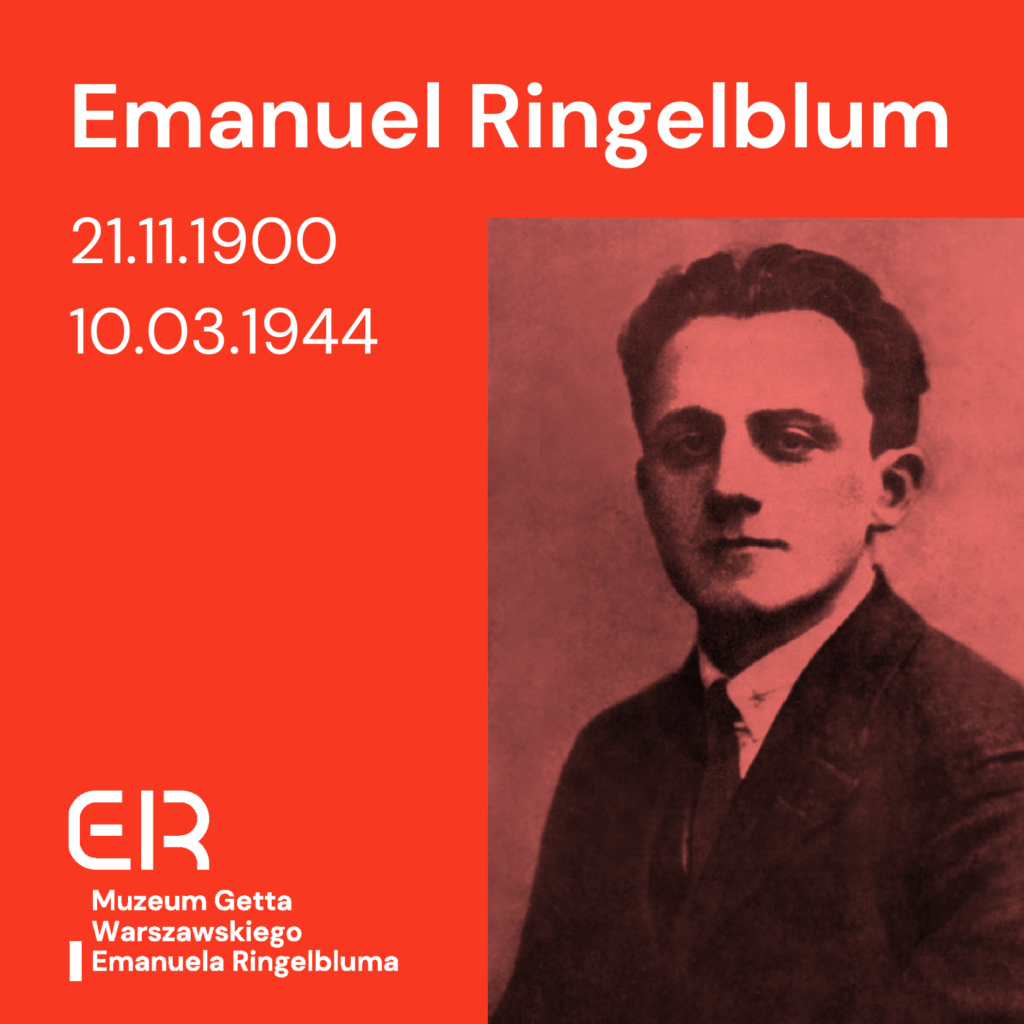Emanuel Ringelblum (21.11.1900–10.03.1944)
historian, educator, social and political activist, known primarily as the creator of the underground Archive of the Warsaw Ghetto, known today as his name, since 2009 patron of the Jewish Historical Institute in Warsaw

Ringelblum was born in Buczacz, before moving with his family to Nowy Sącz during the First World War. After graduating from high school, he began studying history at the University of Warsaw. In 1927, on the basis of his dissertation entitled ‘Jews in Warsaw. From the earliest times to their last exile in 1527’, he obtained from the university a doctorate in philosophy. In 1928 he became a certified secondary school teacher. Working in a gymnasium, he devoted himself to his passion – historical research. He co-founded the Circle of Jewish Historians in Warsaw, and later the Warsaw branch of JIWO – Jewish Scientific Institute in Vilnius. As well as this, he was involved in activities in Jewish working class circles.
Ringelblum was the author of over 120 articles in Polish and Yiddish, and two books. The first was a doctoral dissertation, the second was published in 1937, first in Yiddish, and a year later in Polish. On November 22, 1940, a week after the closing of the Warsaw Ghetto, Ringelblum, in his apartment at 18 Leszno Street, inaugurated an underground research team, operating from then on under the code name of Oneg Shabbat. The group initially focused on collecting materials and documents on broadly understood life in the ghetto, but with time it turned into a thriving research center, the purpose of which was to document various issues related to the life of the Warsaw ghetto, as well as the general situation of the Jewish population in occupied Poland.
At the end of February 1943, Ringelblum, together with his wife Judyta and son Uriel, left the ghetto and hid ‘on the Aryan side’. On the eve of the outbreak of the ghetto uprising, he left the shelter to get to the ghetto, where he was captured and sent to the camp in Trawniki. After four months, thanks to cooperation with the Polish underground, he was freed from the camp.
In the ‘Krysia’ bunker, as the hideout was called, Ringelblum continued documenting the fate of Jews in occupied Poland. There he wrote his last work, entitled ‘Polish-Jewish Relations during World War II’. The shelter at ul. Grójecka 81 was discovered by the Germans thanks to help from informants. All of the Jews staying there, and their guardians, were transported to the Pawiak prison, and after a few days, probably on March 10, 1944, they were shot in the ruins of the ghetto.
translated by Adam Grossman
